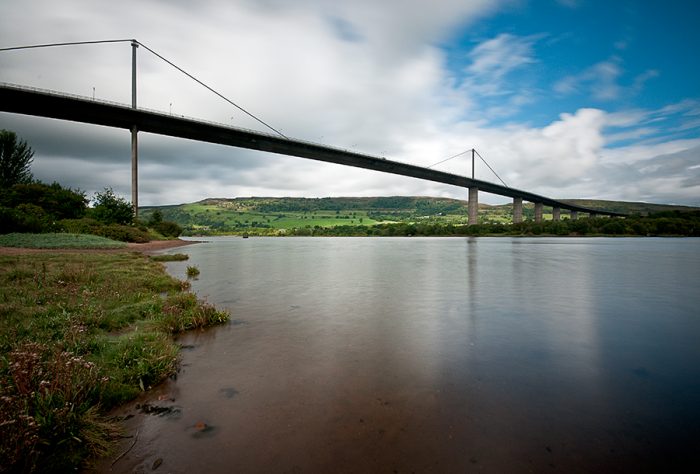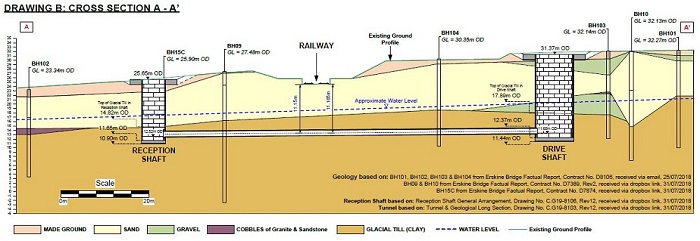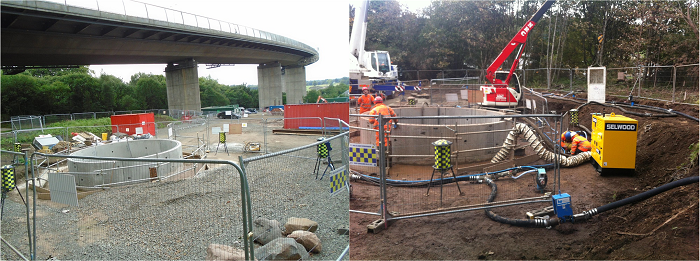
Dewatering for Construction of a Shaft, within the shadow of a major road bridge, adjacent to a live railway, Scotland



Category
Groundwater ContolTEMPORARY GROUNDWATER CONTROL FOR THE REPLACEMENT OF TWO GAS PIPELINES
The project involved the replacement of two 1.5km x 300mm diameter pipelines, suspended within the deck structure of a major road Bridge crossing the River Clyde.
The construction of the new 450mm diameter and 1.9km long pipeline involved micro-tunneling beneath the railway close to Kilpatrick Station. When OGI got involved in the project, the drive shaft to the east of the railway line was constructed and the reception shaft was under construction. However, unexpectedly large boulders were encountered which resulted in construction methodology variation from jacked caisson to underpinning. This methodology required groundwater control to prevent the risk of excessive ground loss, which could lead to ground and structural instability.
OGI was engaged to provide specialist knowledge in area of groundwater management and control, to advise on, and to design, the most appropriate groundwater control strategy. A groundwater control system was required in order to lower the pore water pressure at the shaft to stabilise the saturated soil to enable underpinning, without resulting in groundwater lowering sufficient to cause an impact to the Railway Line, and to Piers 13 and 14 of the bridge.
The groundwater control design primary objectives included lowering the water table, to reduce groundwater and ground inflows into the shaft, during continued excavation and mitigating the hydrogeological impact on the surrounding region and key infrastructure.
The groundwater control design system designed consisted of 8 No. pumping wells installed outside the jacking collar of the reception shaft to a depth of circa 20m below ground level. 7 No. recharge wells were installed at the boundary of the site, in between the shaft and Piers 13 and 14, and between the shaft and the Railway Line. This was so that groundwater pumped from around the shaft could be reinjected back into the ground to prevent significant groundwater lowering close to these sensitive structures. Finally 4 No. monitoring wells were installed, containing dataloggers to monitor water levels in real time throughout the operation.
Regular survey measurements confirmed that no significant settlement had taken place as a result of dewatering activities, enabling completion of the shaft construction and subsequent installation of the replacement gas main.




